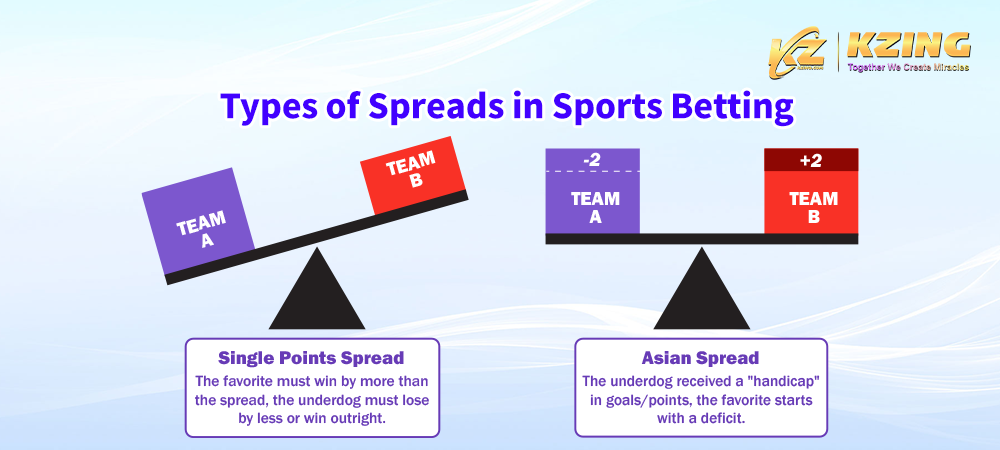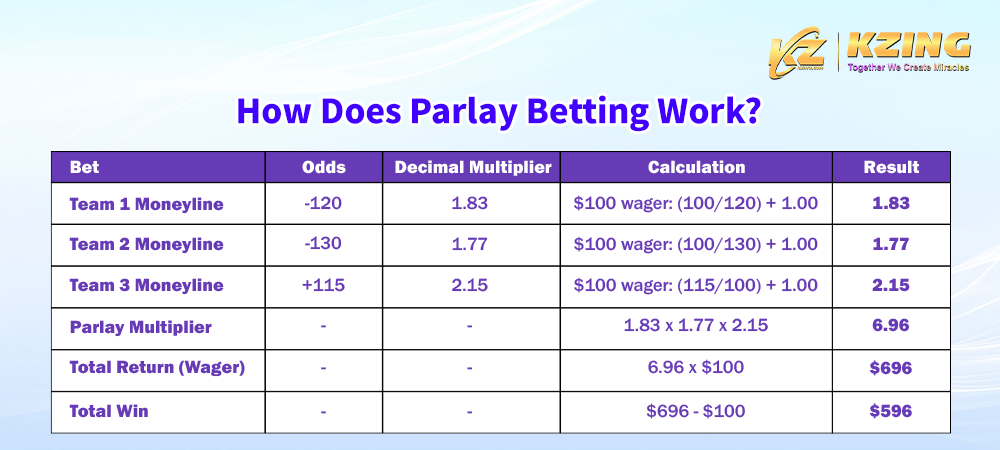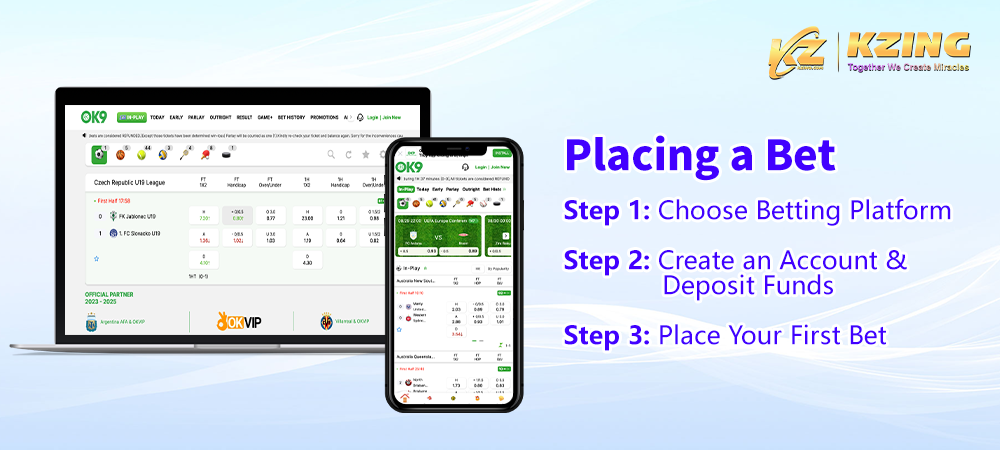

Online sports betting has surged in popularity over recent years, offering fans an exciting way to engage with their favorite sports. Whether you’re looking to add some thrill to the game or potentially earn some extra cash, getting started with sports betting can be both fun and rewarding. However, diving into the world of sports betting can be overwhelming if you’re unfamiliar with the basics. This guide is designed to help beginners understand how to navigate the world of online sports betting, ensuring a smooth and enjoyable start to your betting experience.
Table of Contents [show]
Understanding the Basics of Sports Betting
Before placing your first bet, it’s important to grasp the fundamentals of sports betting. In simple terms, sports betting involves predicting the outcome of a sporting event and placing a bet/wager on that prediction. Online platforms make this process convenient by offering a wide range of sports and betting options at your fingertips. Kzing, for example, offers comprehensive solutions for online gaming and betting platforms, ensuring a seamless user experience from registration to payout.
Odds and How to Read Them
Odds in sports betting represent the likelihood of a particular outcome happening in a sporting event. They are also used to calculate how much money you can win on a bet. Essentially, odds serve two main purposes:
Probability Representation – Odds reflect how likely an event is to occur. For example, if a team is given high odds, it suggests they are less likely to win, while low odds indicate a higher probability of winning.
Payout Calculation – Odds determine the amount of money you can win based on your bet. The higher the odds, the larger the potential payout, but also the less likely the outcome.
Understanding odds is crucial to becoming a successful bettor. There are three main types of odds you’ll encounter:
Decimal Odds – Common in Europe, Canada, and Australia, these odds represent the total payout rather than the profit.
Fractional Odds – Popular in the UK, these odds show the profit relative to the stake.

Moneyline Odds – Standard in the US, these odds are either positive or negative. Positive odds show how much profit you’ll make on a $100 bet, while negative odds indicate how much you need to bet to win $100. For example, +180 means that you would win $280 if you bet $100, while -180 means that you would need to bet $180 in order to win $100.
Most sports betting platforms can be customized to display odds in your preferred format, enhancing your betting experience by making it easier to understand and compare odds across different events.
Importance of Understanding Odds
Odds help you assess the risk vs. reward of a bet and allows you to calculate potential returns before placing a bet. Odds can vary between bookmakers, so understanding them helps you find the best value.
Single-Points Spread? Asian Spread? Parlay Betting? A Guide to Sports Betting Terms

In sports betting, a spread (also known as the point spread) is a type of bet that involves a margin of victory rather than simply picking the winner or loser of a game. The spread is designed to make a game more evenly matched from a betting perspective, especially when one team is significantly favored over the other.
Getting familiar with common betting terms is essential to placing informed bets. Here’s a quick guide:
Single Point Spread
This is simply a point spread set at a single point. For example, if the point spread for a game is -1 for the favorite, that team must win by more than 1 point for a bet on them to win. If the spread is +1 for the underdog, they can lose by 1 point or win the game outright for a bet on them to win.
Asian Spread
Originating in Asia, Asian Spread is popular for betting on football. It aims to eliminate the possibility of a draw by giving one team a virtual advantage or disadvantage before the game starts. This makes the betting more competitive and fairer, especially when one team is heavily favored to win. The perceived weaker team is given a “handicap” in terms of goals or points, while the stronger team starts with a deficit. The handicap can be a whole number, a half number, or even a quarter number.
Example of Asian Spread Betting:
Team A: -1.5
Team B: +1.5
If you bet on Team A: Team A must win by 2 or more goals for your bet to win.
If you bet on Team B: Team B wins the bet if they win, draw, or lose by just 1 goal.
Parlay Betting
A popular type of sports bet where a bettor combines multiple individual bets into a single wager. For the parlay to win, all the individual bets (also known as “legs”) must be successful. If even one of the bets in the parlay loses, the entire parlay loses.
Key Features of Parlay Betting:
Multiple Bets in One – A parlay can include bets on different games, different outcomes within the same game, or a mix of both. Common types of bets in a parlay might include point spreads, moneylines, totals (over/under), and props.
Higher Risk, Higher Reward – Since the odds of winning multiple bets are lower than winning a single bet, sportsbooks offer higher payouts for parlays, payouts are higher. The more legs you add to a parlay, the greater the potential payout, but also the higher the risk.
Payout Calculation – The payout for a parlay bet is determined by multiplying the odds of each individual bet. As you add more legs with different odds, the overall odds increase, leading to potentially larger payouts.
Example of a Parlay Bet:

Decimal Multiplier: Convert each bet into a decimal multiplier by calculating the odds.
Parlay Multiplier: Multiply these decimal odds together to get the total parlay odds.
Total Return: Multiply the parlay multiplier by the wager to get the total return.
Total Win: Subtract the initial wager from the total return to get the profit.
Sports betting platforms like Kzing’s sportsbook supports a variety of betting types, including point spreads, Asian spreads, and parlays, allowing bettors to explore different strategies as they gain experience.
How to Bet on Sports
There are essentially 2 forms of sports betting, non-live betting and live-betting. Non-live betting involves placing bets on the outcome of an event before it begins, rather than during the event. This is the traditional form of sports betting and is still the most common way people place bets.
Live betting, or in-play betting, allows you to place wagers on a game while it’s happening. This dynamic form of betting lets you react to the action in real-time, adding an extra layer of excitement. For example, if you notice a team gaining momentum, you can place a bet on them mid-game. Live betting has been gaining popularity due to its fast-paced nature and the ability to react to the unfolding action.
Advantages of Non-Live Betting:
More Time for Research – Since you place your bets before the event starts, you have time to analyze stats, trends, and other relevant information.
Less Pressure – Non-live betting doesn’t require split-second decisions, so you can think through your wagers more carefully.
Advantages of Live Betting:
Flexibility – Adjust your bets as the game unfolds.
Increased Engagement – Stay invested in the game from start to finish.
Key Tips for Live Betting:
Stay Informed – Keep up with live stats and game progress.
Quick Decision-Making – Odds can change rapidly, so be ready to act fast.
As the popularity of live betting grows, more and more sports betting platforms like Kzing’s partners offer real-time updates and a user-friendly interface, making it easy to place bets quickly as the action unfolds.
Getting Started: Your First Bet

Ready to place your first bet? Here’s how to get started:
- Choosing a Betting Platform: Look for a site with a good reputation, user-friendly interface, and a variety of sports and betting options. Kzing’s platform development services ensure that betting sites are both secure and easy to navigate, providing a top-notch experience for users.
- Creating an Account and Depositing Funds: Signing up is usually straightforward. You’ll need to provide some personal information and choose a deposit method. Sports betting platforms typically support multiple payment methods, ensuring your transactions are safe and convenient.
- Placing Your First Bet: Start small and choose a sport or event you’re familiar with. Select your bet type, enter the amount, and confirm your bet.
- Responsible Betting Practices: Set a budget before you start and stick to it.
Avoid Common Sports Betting Mistakes
As a beginner, it’s easy to make mistakes that can cost you money. Here are some pitfalls to avoid:
Overbetting – Don’t bet more than you can afford to lose. It’s crucial to manage your bankroll effectively.
Chasing Losses – If you lose a bet, resist the urge to immediately place another to recover your losses. This often leads to bigger losses.
Ignoring Bankroll Management – Set aside a specific amount of money for betting and stick to it, regardless of your wins or losses.
Betting Without Research – Knowledge is power in sports betting. Make informed decisions by researching teams, players, and recent performance before placing a bet.
Kzing’s white label sports betting solutions means that our partners can offer bettors a sports betting site that not only makes it engaging to bet, but also feature analytics tools and betting tips to help you make more informed decisions, reducing the likelihood of costly mistakes.
Starting with online sports betting can be an exciting journey if you approach it with the right knowledge and strategies. By understanding the basics, learning how to read odds, familiarizing yourself with key betting terms, and practicing responsible betting, you’ll set yourself up for a positive experience. Remember to start small, learn as you go, and enjoy the thrill of the game!


![Dive into the Games Offered by White Label Providers DW_Article_3_Choose_a_White_Label_Provider_文章封面_en_400x250[1]](https://www.kzing.co/wp-content/uploads/2024/04/DW_Article_3_Choose_a_White_Label_Provider_文章封面_en_400x2501-150x150.png)







